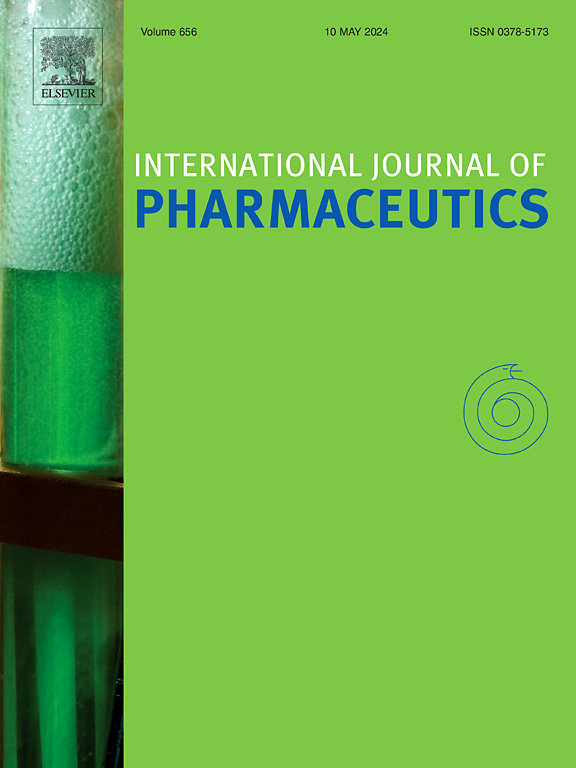Process development of tangential flow filtration and sterile filtration for manufacturing of mRNA-lipid nanoparticles: A study on membrane performance and filtration modeling
IF 5.3
2区 医学
Q1 PHARMACOLOGY & PHARMACY
引用次数: 0
Abstract
Lipid nanoparticles (LNPs) are the most studied delivery systems for mRNA therapeutics and have gained importance in both industry and academia following the approval of multiple mRNA-LNP-based vaccines since 2021. The COVID-19 pandemic proved the remarkable efficacy and rapid deployment of mRNA-LNP vaccines, reinforcing their potential for broader therapeutic and vaccine applications. Currently, multiple mRNA-LNPs are in various stages of preclinical and clinical development. LNPs are sensitive to the manufacturing process, and to mitigate the risks associated with bringing an mRNA-LNP from benchtop to industrial scale, it is recommended to have a systematic process development approach, including mathematical modeling and statistical analysis. Among the unit operations required for mRNA-LNP manufacturing, concentration and buffer exchange by tangential flow filtration (TFF), as well as sterile filtration, are challenging and must be optimized to guarantee process scalability and product quality, while avoiding issues such as membrane fouling and incorrect filter capacity. This study investigates the optimization of TFF and sterile filtration parameters to manufacture higher concentration mRNA-LNPs necessary for cancer vaccines, particularly personalized cancer vaccines. Various flat-sheet TFF cartridges were tested under different process parameters, including flow rate and transmembrane pressure (TMP), to identify the most effective process conditions. Furthermore, the sterile filtration of mRNA-LNPs was analyzed using the gradual plugging model, providing insights into improving filter capacity, optimizing filtration pressures, and defining the design space for large-scale manufacturing. These findings contribute to the development of a robust and scalable mRNA-LNP manufacturing process ensuring product quality.

制备mrna -脂质纳米颗粒的切向流过滤和无菌过滤工艺开发:膜性能和过滤模型的研究
脂质纳米颗粒(LNPs)是研究最多的mRNA治疗递送系统,自2021年以来,多种基于mRNA- LNPs的疫苗获得批准,在工业界和学术界都变得越来越重要。2019冠状病毒病大流行证明了mRNA-LNP疫苗的显著疗效和快速部署,增强了它们在更广泛的治疗和疫苗应用方面的潜力。目前,多个mRNA-LNPs处于临床前和临床开发的不同阶段。lnp对制造工艺很敏感,为了降低mRNA-LNP从台式到工业规模的风险,建议采用系统的工艺开发方法,包括数学建模和统计分析。在mRNA-LNP制造所需的单元操作中,切向流过滤(TFF)的浓缩和缓冲交换以及无菌过滤是具有挑战性的,必须进行优化,以保证工艺可扩展性和产品质量,同时避免膜污染和过滤容量不正确等问题。本研究探讨了TFF和无菌过滤参数的优化,以生产癌症疫苗,特别是个性化癌症疫苗所需的高浓度mRNA-LNPs。在不同的工艺参数下,包括流量和跨膜压力(TMP),测试了各种平板TFF墨盒,以确定最有效的工艺条件。此外,使用逐渐堵塞模型分析了mRNA-LNPs的无菌过滤,为提高过滤容量,优化过滤压力以及确定大规模制造的设计空间提供了见解。这些发现有助于开发强大且可扩展的mRNA-LNP制造工艺,确保产品质量。
本文章由计算机程序翻译,如有差异,请以英文原文为准。
求助全文
约1分钟内获得全文
求助全文
来源期刊
CiteScore
10.70
自引率
8.60%
发文量
951
审稿时长
72 days
期刊介绍:
The International Journal of Pharmaceutics is the third most cited journal in the "Pharmacy & Pharmacology" category out of 366 journals, being the true home for pharmaceutical scientists concerned with the physical, chemical and biological properties of devices and delivery systems for drugs, vaccines and biologicals, including their design, manufacture and evaluation. This includes evaluation of the properties of drugs, excipients such as surfactants and polymers and novel materials. The journal has special sections on pharmaceutical nanotechnology and personalized medicines, and publishes research papers, reviews, commentaries and letters to the editor as well as special issues.

 求助内容:
求助内容: 应助结果提醒方式:
应助结果提醒方式:


